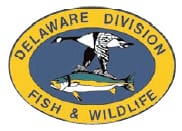DNREC Continues To Monitor State’s Bat Population For White-Nose Syndrome


Delaware –-(AmmoLand.com)- Delaware environmental officials are closely monitoring the state’s bat populations for any occurrence here of White-nose Syndrome (WNS), a disease that has caused mass mortality at bat hibernation sites in northeastern states.
While WNS has not been detected in Delaware yet, as many as 1 million bats so far have died from the disease, most of them in states notable for having caves and mines where bats colonize when hibernating.
Only bat species that overwinter communally are known to be affected by WNS, but those include some of the more common bats, such as the little brown bat, big brown bat and the tri-colored bat (formerly known as the eastern pipistrelle). Northern long-eared bats,small-footed bats and the federally endangered Indiana bat have also been affected. WNS was first discovered in 2006 near Albany, N.Y. and has since been found to have killed bats in nine states.
Meanwhile, Delaware wildlife biologists are collecting information to aid in assessing the status of the disease and its effect on bat populations in the states such as Delaware that have no caves or underground mines. Public input is enthusiastically sought in gathering this information, said wildlife biologist Holly Niederriter of DNREC’s Division of Fish & Wildlife.
“Right now, we are looking for any bats overwintering here in Delaware. The most likely species for people to see in winter is the hearty big brown bat, which can overwinter in residential attics, basements or barns. We also plan to check bats for signs of WNS as they return to their summer nesting sites and to continue our volunteer bat count program in the spring.” Niederriter said.
The public is asked to use an online reporting application if you if you know of any winter or summer rooting sites. Please only report sites if you know where the bats roost. Also, if you see a number of dead bats (five or more) in one location, or see a similar number of bats flying in the middle of the day or clinging low on structures; please let us know.
Input your information by visiting http://www.fw.delaware.gov/bats/ and clicking on the online reporting form. Seeing one or two bats out during the day or clinging to the side of a house is not unusual, and need not be reported.
DNREC’s Division of Fish & Wildlife oversees a volunteer bat count project, found online at http://www.fw.delaware.gov/bats/Pages/BatCount2010.aspx, and is always looking for new volunteers.
For more information, please call Bill Langworthy or Holly Niederriter of Delaware Division of Fish & Wildlife, at 302-653-2880.
